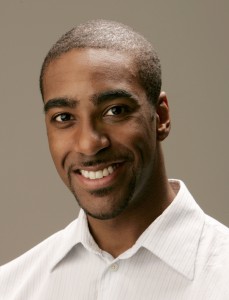
In part one of this story, we reported on the experience of a dozen NPR member stations who participated in the $3 million Argo Project. Today, we focus on what the network learned from the project.
Forgive the headline, but Matt Thompson made me write it.
NPR hired Thompson in 2010 to help guide 12 member stations through the Argo Project, and along the way he shared his bits of blogging wisdom with all of us — from using numbers in headlines to embracing the Wiccan Rule of Three. (“The energy you send into the world will be returned to you three times over.”)
The project winds down at the end of this month, and, as I wrote yesterday, NPR sees it as a success. Thompson and the Argonauts will keep their jobs at the network next year. “We have right now both the desire and the opportunity to formally take what we’ve done with this pilot set of stations and spread it out as widely as we can within the system,” Thompson said.
I talked to Thompson and his boss, project director Joel Sucherman, about what they learned from the two-year pilot. If Thompson coined the “Sully lead” — Andrew Sullivan’s noun-verb-blockquote style of bloggage — I shall present this article as a Thompsicle: a Matt Thompson listicle.1
Soon after its inception in 2009, the Argo Project became the Argo Network.
“When we originally set out to do this, the notion of a network was not really part of it,” Sucherman said. “Fairly early in the process, I think it was a couple of months in, it became clear that there could really be potential for the network to be greater than the sum of its parts.”
 Externally, the Argo sites promote one another. The ever-present “Network Highlights” box in the sidebar promotes the kind of unexpected discovery you might find on Morning Edition or All Things Considered. “It’s that serendipitous aspect of, I might be listening to a health reform story right now, but if it’s of a certain voice or quality, I would be just has interested in the story coming up next about higher education.”
Externally, the Argo sites promote one another. The ever-present “Network Highlights” box in the sidebar promotes the kind of unexpected discovery you might find on Morning Edition or All Things Considered. “It’s that serendipitous aspect of, I might be listening to a health reform story right now, but if it’s of a certain voice or quality, I would be just has interested in the story coming up next about higher education.”
Internally, the network serves as a sort of support group for the reporters, none of whom had professional blogging experience before joining Argo. Many had limited web skills and no Twitter experience before the project started.
“It was as much a technical network, and a network of ideas, as it was a content network,” Thompson said. Despite widely disparate topics, “we found a lot of interesting crossovers. We had, for example, at one point three different sites covering secure communities from three different angles, but sharing coverage, sharing ideas, creating reporting plans together in several cases.”
NPR is bringing these lessons to projects like StateImpact, which resembles Argo on a grand scale. That project is a collaboration between the network and stations in all 50 states. So far eight states are up and running.
All of the Argo sites run a modified version of WordPress which the NPR team built specially for the project. The platform includes tools to make life easier for bloggers, such as the link round-up tool we covered last year. All stations were required to use the Argo software, which meant the developers could push software updates to everyone at once. It also centralized the technical support.
The Argo team was not interested in building a new content-management system from scratch. As he wrote in June, Thompson says journalism is moving toward the content management ecosystem.
Digital news operations used to think of their CMS as their one-stop shop: a tool that would do everything one might want to do with one’s content…We’ve finally begun to accept that no single CMS can handle all of a digital news organization’s content functions. A good content management system today is designed to interact with lots of other software.
Sucherman said the Argo team will donate the platform to the open-source community as soon as they finish shoring up the code. Long-term technical support will move to NPR’s Digital Services division.
Thompson has to communicate with 12 stations in three time zones, which is not easy. (“The Clay Shirky phrase totally holds true here,” he says. “Nothing will work, but everything might.”)
“All public radio stations are very different,” Thompson said. “It’s not really akin to a newspaper chain and affiliates. Newspapers can be very different, but chances are they have very similar structures and hierarchies and what have you, and that’s so not true in the public radio universe.”
 He continued: “That’s been interesting and valuable because…it feels like we’ve gotten sort of a microcosm of the broader universe of stations and the challenges they have to deal with.”
He continued: “That’s been interesting and valuable because…it feels like we’ve gotten sort of a microcosm of the broader universe of stations and the challenges they have to deal with.”
Thompson has laid out in detail the many tools and approaches he uses to communicate on a daily basis: Skype, PiratePad, Twitter, Go2Meeting, Basecamp, the telephone, and face-to-face communication when he can swing it.
When none of those tools suited a particular need, Argo created its own. Any news organization can do this: The team deployed OSQA, an open-source web app, for its technical support site. It’s like Stack Overflow for a niche group. Because it’s a question-and-answer site, not a discussion forum, threads are limited to questions of “How do I…” and not tangential debate. Like Stack Overflow, users can vote answers up or down, and a question is “closed” when answered.
While Argo was pretty prescriptive about the daily workflow, encouraging exercises like the daily link round-up, a lot of differences emerged among the bloggers.
Two of the biggest sites in the network, KQED’s MindShift and WBUR’s CommonHealth, are different in many ways, Thompson said. “MindShift is a daily site, where the focus is on significant banner pieces each day, where it includes a lot of contributions from freelancers,” he said. “The storytelling is almost a bigger part of CommonHealth, it’s a very carefully crafted, almost long-form narrative.”
“Dropping a blogger into a traditional news organization and putting him or her in the last cubicle on the left, next to the kid with the Star Wars toys, is not the best way to do it.”
CommonHealth gained attention for its deeply personal reporting, such as Rachel Zimmerman’s account of having painful sex after childbirth. That was not the plan, but Zimmerman continued reporting it in response to a tremendous community response.
“As the project has gone on, I’ve actually defaulted to calling the bloggers reporter-editors, rather than reporter-bloggers, just because that subtle shift in language suggests something different to the folks that hear it,” Thompson said. “So much of what they do and so much of the skill set that they have, that they’ve developed over the year, is really as an assigning editor, too. It’s having the judgment, the news judgment, and the organizational capacity.”
At Oregon Public Broadcasting, Ecotrope originally was meant to cover the environment of the Pacific Northwest — a big topic. “As spring really got underway, we started talking about, What within that is our domain, what within that do we want to own?” Thompson said. “And Cassandra [Profita, the site’s reporter] had become much more interested in issues of the grid, the energy grid, and how Oregon was going to achieve the renewable energy standards that it set out for itself leading up to 2020.” Shortly thereafter, Profita caught an unusual story: The local utility was shutting down wind turbines because there was too much energy on the grid. That became a dominant story on the blog over several months.
Sucherman said Argo pushed bloggers to work with the radio journalists wherever possible. Zimmerman and CommonHealth co-host Carey Goldberg work closely with WBUR’s health care reporter, and they appear once a week on Radio Boston, the station’s local news show.
The most successful Argo blogs, he said, are those that enjoyed the most institutional support — and that’s unrelated to the size and wealth of a station. What Sucherman learned could serve as a manifesto for any digital journalist today:
“It’s very clear that dropping a blogger into a traditional news organization and putting him or her in the last cubicle on the left, next to the kid with the Star Wars toys, is not the best way to do it…I think it’s important the newsroom ultimately be a place where this person lives. This person needs to be of the newsroom. He or she should have support of an editor-level person. Also, you’ve got to have a buy-in from the executive team, as well. It can’t be something like, ‘Well, this is a newsroom experiment.’
“Ultimately, we all have to be looking at our futures. I come from the newspaper industry, and I don’t want to be in that position again where we’re staring into the abyss in the eleventh hour. I don’t think that’ll be the case for public radio, because public radio audiences keep growing. But I wouldn’t want to be in that situation.”